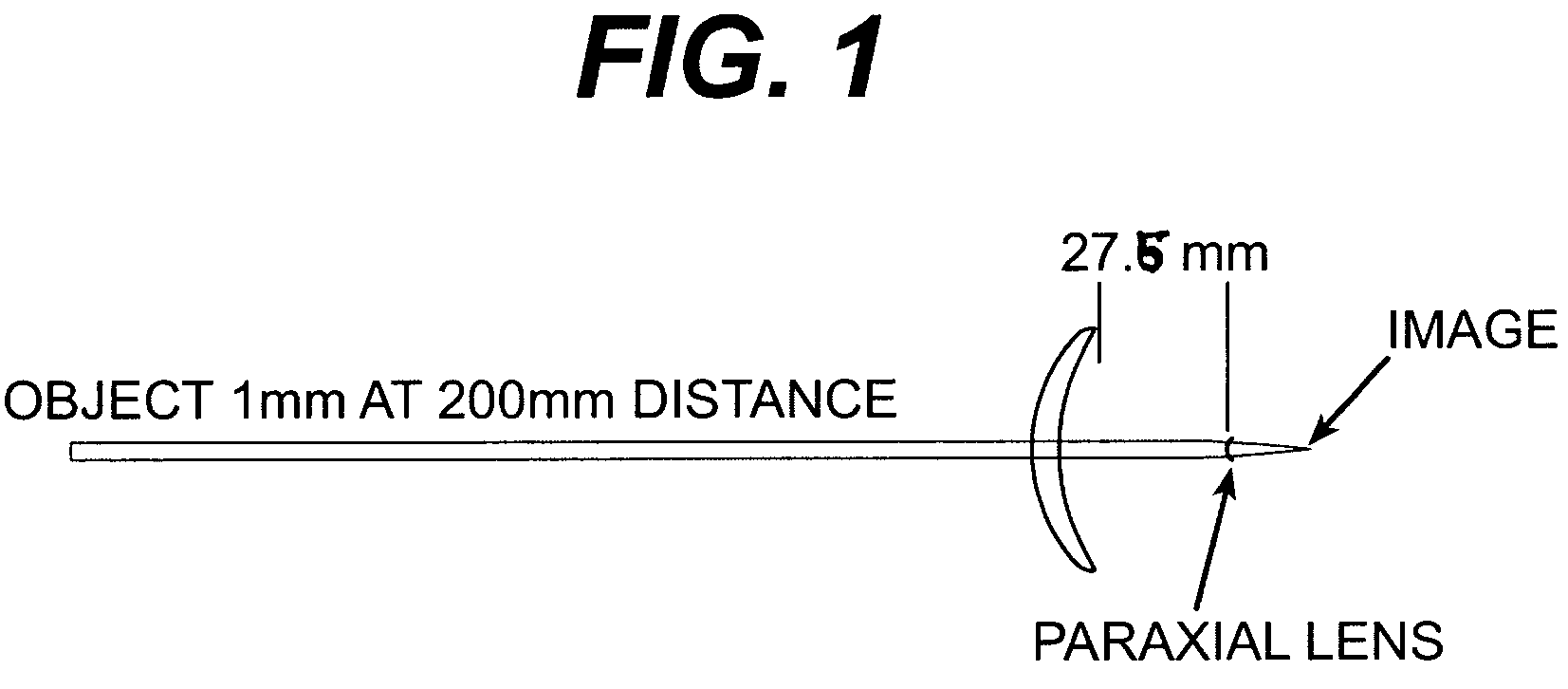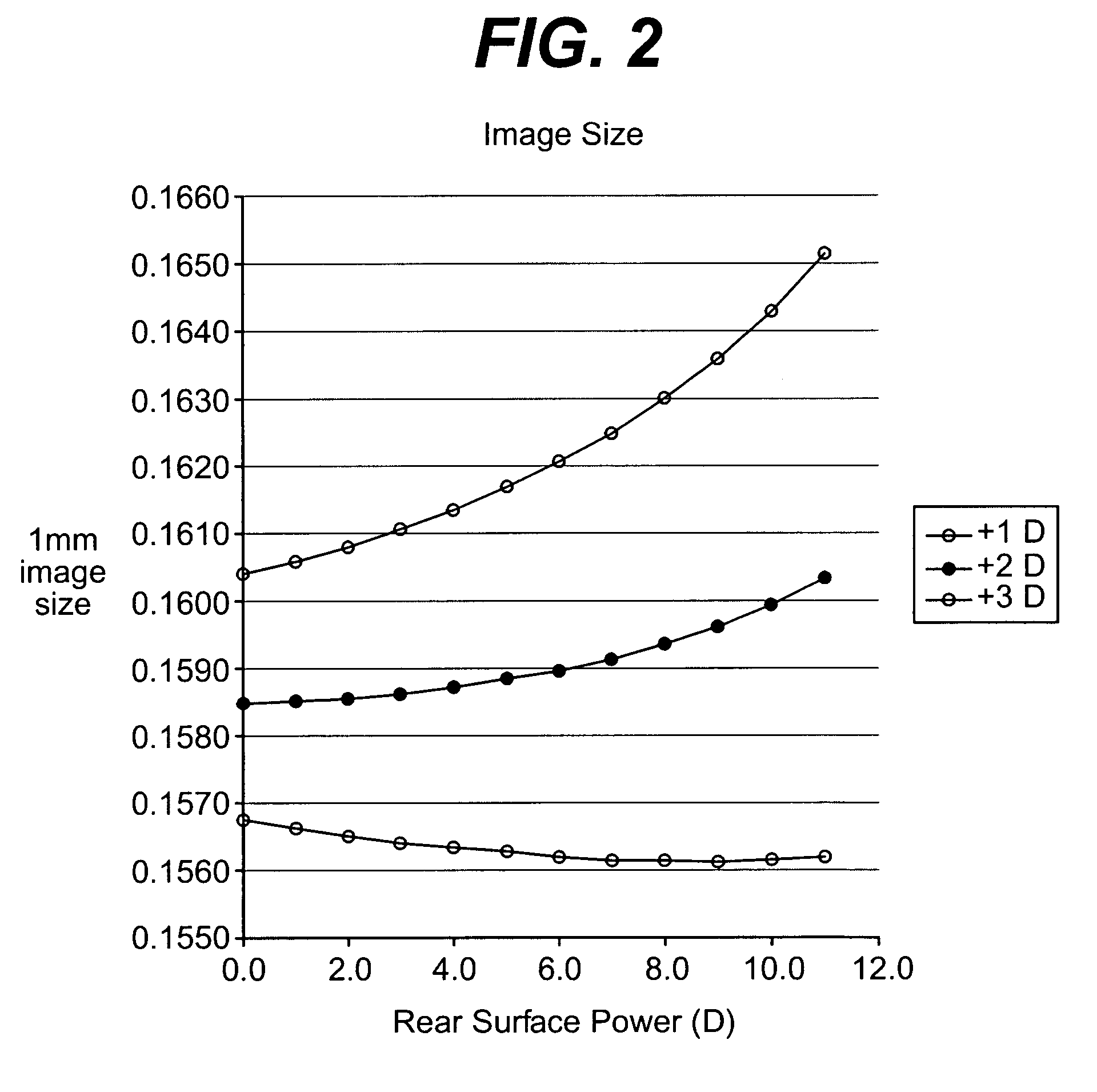Progressive addition lenses with adjusted image magnification
a technology of progressive addition and image magnification, applied in the field of progressive addition lenses, can solve the problems of reducing the ability of the retina to resolve fine detail in a focused image, reducing the ability of the individual to read small print, and conventional pals providing only a fixed magnification
- Summary
- Abstract
- Description
- Claims
- Application Information
AI Technical Summary
Benefits of technology
Problems solved by technology
Method used
Image
Examples
example 1
[0036]An individual's refractive power is determined to be as follows: +1.25 D Sph, 0.0 D Cyl., 2.00 D Add OD and +3.50 D Sph, 0.0 D Cyl, and 2.00 D add power OS. The OD base curve is 6.00 D with an image magnification of 1.0279 (2.79%) and the OS base curve is 8.00 D with an image magnification of 1.0778 (7.78%). The OD add power sphere power is 3.25 D with a curvature is 8.00 D and the OS add power sphere power is 5.25 D with a curvature of 10.00 D. The near magnification of 1.04 for OD and 1.08 for OS resulting in a 4% difference between the eyes in magnification.
[0037]The add power for OS is then placed entirely on the back surface and entirely on the front surface for OD. This results in an image magnification for OD of 1.076 and 1.078 for OS.
PUM
 Login to View More
Login to View More Abstract
Description
Claims
Application Information
 Login to View More
Login to View More - R&D
- Intellectual Property
- Life Sciences
- Materials
- Tech Scout
- Unparalleled Data Quality
- Higher Quality Content
- 60% Fewer Hallucinations
Browse by: Latest US Patents, China's latest patents, Technical Efficacy Thesaurus, Application Domain, Technology Topic, Popular Technical Reports.
© 2025 PatSnap. All rights reserved.Legal|Privacy policy|Modern Slavery Act Transparency Statement|Sitemap|About US| Contact US: help@patsnap.com



